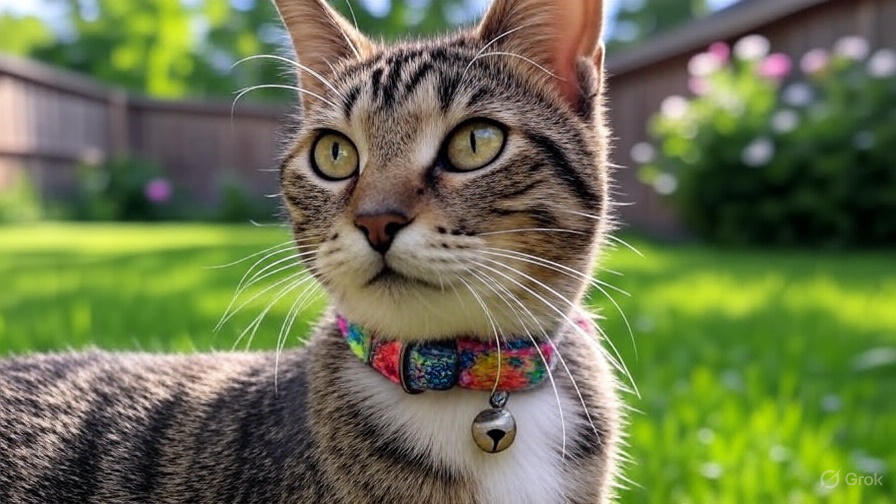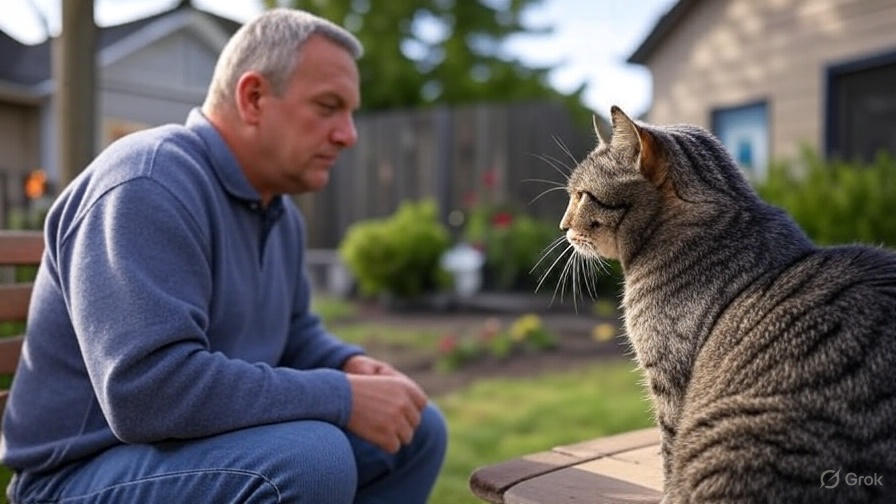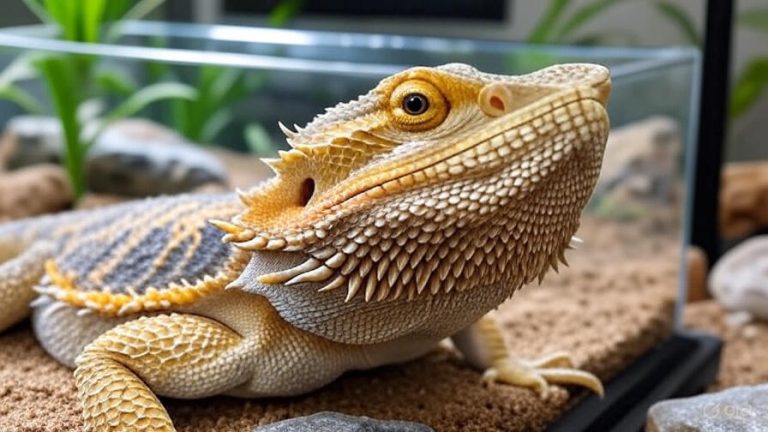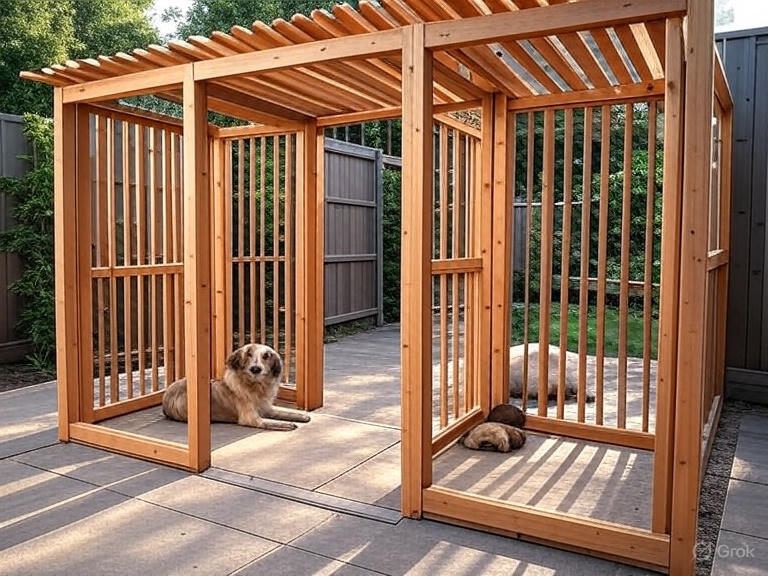How to Keep Your Cat in Your Yard?
Cat owners face a common dilemma when they want their feline companions to enjoy outdoor time while staying safe. Many cats love exploring beyond their property boundaries, which creates risks from traffic, predators, and other hazards. The good news is that you can give your cat outdoor freedom while keeping them secure in your own yard.
This comprehensive guide will walk you through proven methods to create a cat-friendly outdoor space that keeps your pet happy, healthy, and close to home.
Why Keeping Cats in Your Yard Matters
Outdoor cats face numerous dangers that indoor cats avoid entirely. Traffic accidents remain the leading cause of death for free-roaming cats. Wild animals like coyotes, foxes, and large birds of prey also pose serious threats to cats that wander too far from home.
Your cat can also become a nuisance to neighbors when they use flower beds as litter boxes or hunt birds in backyard feeders. Some communities have strict leash laws for cats, making containment a legal requirement rather than just a safety preference.
Indoor cats typically live 13-17 years, while outdoor cats average only 2-5 years. These statistics highlight the importance of finding safe ways to give cats outdoor access without the risks of free roaming.
Physical Barriers: The Foundation of Cat Containment
Cat Fencing Systems
Specialized cat fencing offers the most reliable solution for keeping cats contained. These systems work differently from traditional dog fences because cats are excellent climbers and jumpers.
The most effective cat fences feature inward-curving tops that prevent cats from climbing over. The curved section creates an overhang that cats cannot grip or leap past. Most commercial cat fencing systems stand 6-8 feet tall and include this crucial curved design.
You can install cat fencing over existing fences or as standalone barriers. The installation process typically takes a weekend for average-sized yards, and most homeowners can handle the project themselves with basic tools.
DIY Fence Modifications
Budget-conscious cat owners can modify existing fences with simple additions. Attach a 45-degree angled extension to the top of your current fence, creating the same overhang effect as commercial systems.
Chicken wire or hardware cloth works well for these extensions. Secure the wire to wooden fence posts with heavy-duty staples or screws. The angled design prevents cats from getting enough grip to climb over.
Another DIY approach involves adding roller bars to fence tops. These spinning cylinders prevent cats from maintaining their balance when they try to walk along the fence line. You can make roller bars from PVC pipe threaded onto steel rods.
Mesh and Netting Solutions
Overhead netting creates a complete enclosure for your yard or specific garden areas. Heavy-duty bird netting or deer fencing material works best for this application. The mesh needs enough strength to support a jumping cat without tearing.
Install netting between tall poles or tree branches to create a roof over the contained area. This method works particularly well for smaller spaces like patios or garden sections.
Some cat owners combine ground-level fencing with overhead mesh for complete containment. This approach ensures cats cannot dig under, climb over, or jump out of the designated area.
Cat Enclosures and Catios
Prefab Cat Enclosures
Ready-made cat enclosures offer convenience for owners who prefer professional-quality containment without DIY construction. These structures range from small patio enclosures to large walk-in units that cover significant yard space.
Most prefab enclosures feature powder-coated aluminum frames with heavy-duty mesh panels. The materials resist weather damage and provide years of reliable service. Assembly typically requires only basic tools and follows straightforward instructions.
Prices for prefab enclosures range from a few hundred dollars for compact units to several thousand for large walk-through designs. The investment often pays for itself through reduced veterinary bills and peace of mind.

Building Custom Catios
Custom-built catios allow you to create the perfect outdoor space for your specific yard and cat’s needs. Start with a simple frame using treated lumber or metal posts. Add mesh panels on all sides and the top to create a fully enclosed area.
Include multiple levels within the catio using shelves, ramps, and climbing structures. Cats love vertical space, so tall enclosures with various perching spots provide more entertainment than ground-level designs.
Consider adding weatherproof elements like partial roofing for shade and rain protection. Many catios include small shelter areas where cats can retreat during extreme weather.
Portable and Temporary Options
Pop-up cat enclosures work well for renters or those who need flexible containment solutions. These lightweight structures set up quickly and provide secure outdoor time without permanent installation.
Portable playpens designed for cats offer another temporary solution. While smaller than permanent enclosures, they allow supervised outdoor time in different yard locations.
Leash systems with overhead runs create temporary containment that moves easily around the yard. These systems work best for cats comfortable wearing harnesses.
Natural Deterrents and Landscaping
Plants That Repel Cats
Certain plants naturally discourage cats from entering specific areas through their scent or texture. These natural barriers complement physical containment methods and help define boundaries within your yard.
Coleus canina, commonly called the “scaredy cat plant,” produces an odor that most cats find unpleasant. Plant these around yard perimeters or in areas where you want to discourage exploration.
Lavender, rosemary, and pennyroyal also repel many cats while adding attractive elements to your landscape design. These herbs require minimal care and provide dual benefits as both deterrents and useful plants for cooking or crafts.
Thorny plants like rose bushes or barberry create natural barriers that cats prefer to avoid. Position these plants strategically to guide cats away from fence lines or property boundaries.
Texture-Based Deterrents
Cats dislike walking on certain textures, making these materials useful for creating invisible boundaries. Sharp mulch, pine cones, or gravel around yard edges discourage exploration beyond designated areas.
Motion-activated sprinkler systems startle cats when they approach restricted areas. These devices combine harmless deterrence with automated operation, making them ideal for consistent boundary enforcement.
Aluminum foil or plastic carpet runners with the nubby side up create uncomfortable walking surfaces. While not aesthetically pleasing, these materials work well in hidden areas or as temporary deterrents.
Training and Behavioral Solutions
Harness Training Your Cat
Teaching cats to walk on harnesses opens up supervised outdoor opportunities without requiring extensive yard modifications. Start harness training indoors with short sessions and positive reinforcement.
The training process typically takes several weeks for cats to become comfortable wearing harnesses. Begin by letting your cat investigate the harness, then gradually increase wearing time while providing treats and praise.
Once your cat accepts the harness indoors, begin short outdoor sessions in familiar areas. Stay close to your cat during early outdoor adventures to build confidence and trust.
Creating Positive Yard Associations
Make your yard more appealing than neighboring areas by providing enrichment activities and comfortable spaces. Cats that enjoy their home environment are less likely to seek adventure elsewhere.
Install bird feeders where cats can watch from safe distances. The entertainment value of bird watching satisfies hunting instincts without allowing actual predation.
Create sunny spots with comfortable bedding where cats can relax outdoors. Many cats prefer elevated surfaces, so consider adding cat-friendly shelving or platforms in protected areas.
Plant cat grass or catnip in designated areas to provide safe, enjoyable treats. These plants give cats sensory stimulation and encourage them to spend time in approved locations.
Recall Training Basics
Teaching cats to come when called provides an extra safety measure for outdoor time. While not all cats respond reliably to recall training, many can learn this valuable skill with consistent practice.
Use high-value treats and establish a specific call sound or word that means “come.” Practice indoors first, rewarding your cat every time they respond to the recall command.
Gradually move recall training outdoors, starting in secure areas and slowly increasing distance. Never call your cat to end outdoor time, as this creates negative associations with the recall command.
Technology Solutions
GPS Cat Collars
Modern GPS tracking collars allow you to monitor your cat’s location in real-time through smartphone apps. These devices provide valuable data about your cat’s movement patterns and help you identify potential escape routes.
Most GPS collars include customizable safe zones that trigger alerts when your cat leaves designated areas. This early warning system helps prevent cats from wandering too far from home.
Battery life varies between models, with most lasting 2-7 days per charge. Waterproof designs ensure the devices continue working in various weather conditions.
Motion Sensors and Alarms
Motion-activated devices can alert you when cats approach yard boundaries or potential escape points. These systems work particularly well at night when visual monitoring becomes difficult.
Wireless motion sensors with smartphone notifications provide instant alerts about your cat’s location and activities. Position sensors at gates, fence corners, or other areas where cats might attempt escape.
Some motion sensors include built-in deterrents like sounds or lights that discourage cats from continuing toward restricted areas. These multi-function devices combine monitoring with active prevention.
Smart Pet Doors
Programmable pet doors allow cats outdoor access while maintaining security and control. These doors respond to your cat’s microchip or special collar tags, ensuring only authorized pets can enter or exit.
Set time-based restrictions to keep cats indoors during high-risk periods like nighttime or extreme weather. Many smart doors include smartphone apps for remote monitoring and control.
Install smart pet doors in strategic locations that lead to secure outdoor areas like enclosed patios or fenced yards. This technology provides convenient access while maintaining containment.
Maintenance and Long-term Success
Regular Fence Inspections
Cat containment systems require ongoing maintenance to remain effective. Inspect fences monthly for damage, loose connections, or areas where cats might squeeze through.
Pay special attention to corners and gates where structural stress concentrates. Weather and ground settling can create gaps that determined cats will exploit.
Document any repairs needed and address problems promptly. Small issues become major security breaches if left unattended.
Seasonal Considerations
Weather changes affect both cats’ behavior and containment system performance. Winter snow can create ramps over fences, while spring growth might compromise overhead netting.
Adjust containment strategies based on seasonal patterns. Some cats become more adventurous during mating seasons, requiring extra vigilance during these periods.
Check that weather hasn’t damaged gates, latches, or mesh materials after storms. High winds and temperature extremes can compromise containment system integrity.
Adapting to Your Cat’s Behavior
Observe how your cat interacts with containment measures and adjust strategies accordingly. Some cats test boundaries more persistently than others, requiring multiple deterrent methods.
Monitor for new escape attempts or behavior changes that might indicate problems with current containment approaches. Cats often find creative solutions to barriers their owners considered secure.
Keep detailed records of what works and what doesn’t for your specific cat. This information helps you refine your approach and share useful tips with other cat owners.
Conclusion
Keeping your cat safely contained in your yard requires combining multiple strategies tailored to your specific situation. Physical barriers provide the foundation of effective containment, while training, deterrents, and technology add layers of security and convenience.
Start with one or two approaches that fit your budget and yard layout, then expand your containment system based on results and your cat’s behavior. Remember that patience and consistency are key to success with any containment method.
The investment in proper cat containment pays dividends through improved safety, better neighbor relationships, and peace of mind. Your cat can enjoy outdoor freedom while staying protected from the many hazards that face free-roaming pets.
With proper planning and implementation, you can create an outdoor environment that satisfies your cat’s natural instincts while keeping them safe and secure in your own yard.







